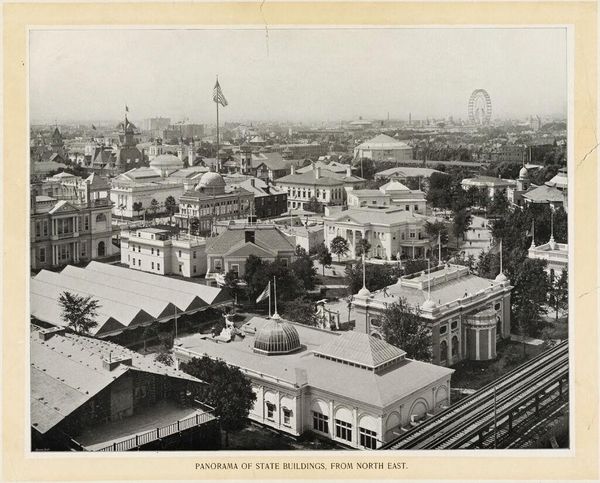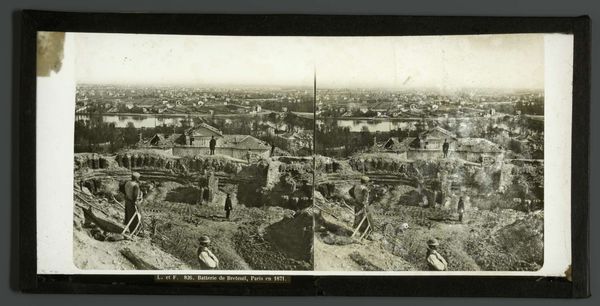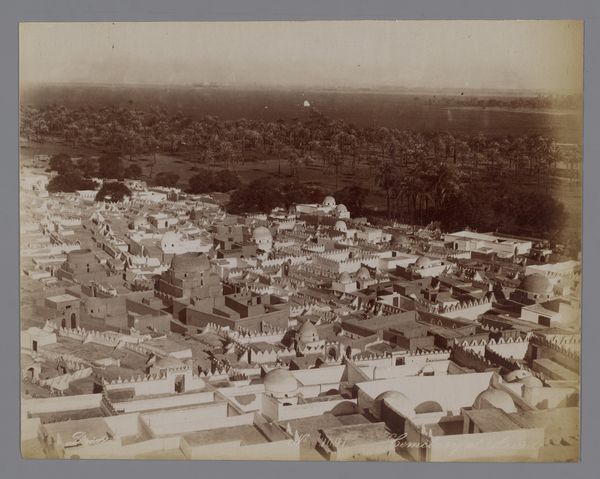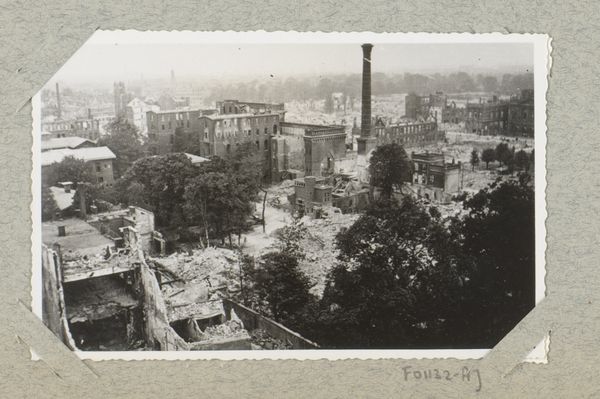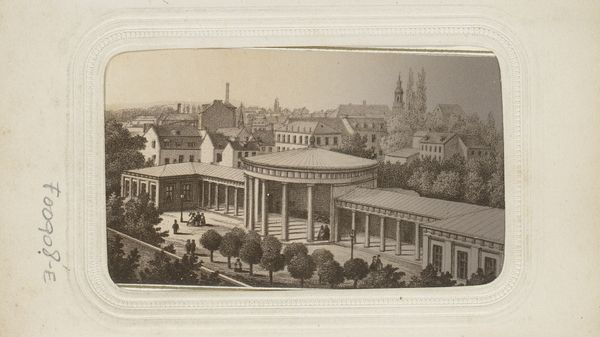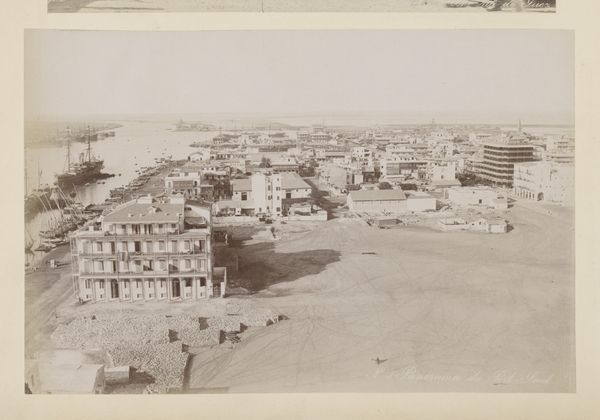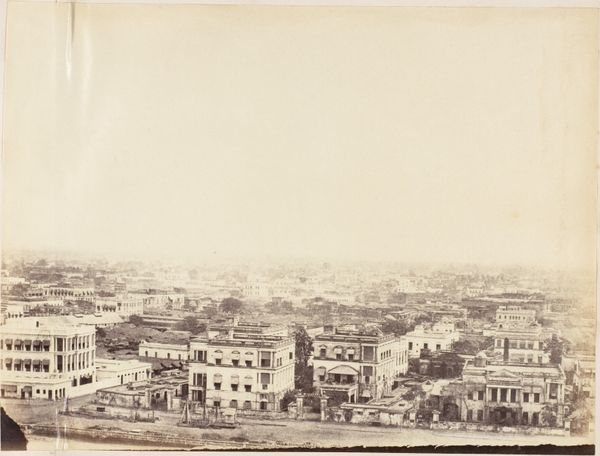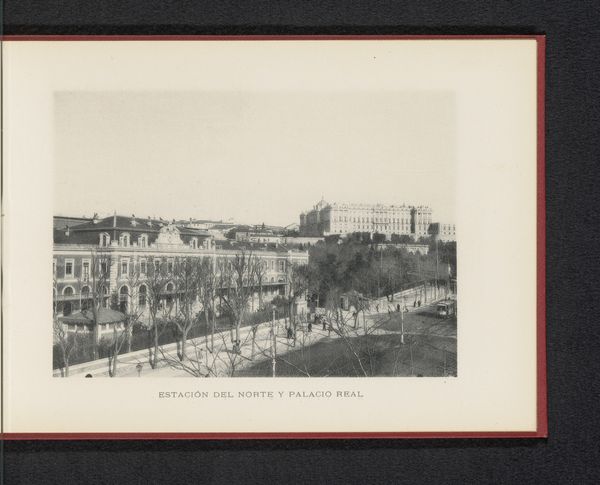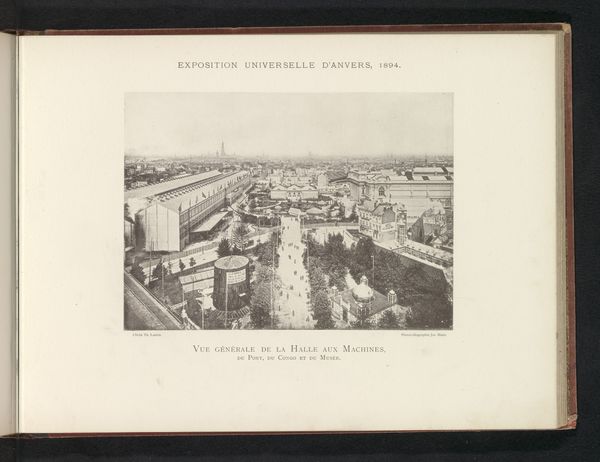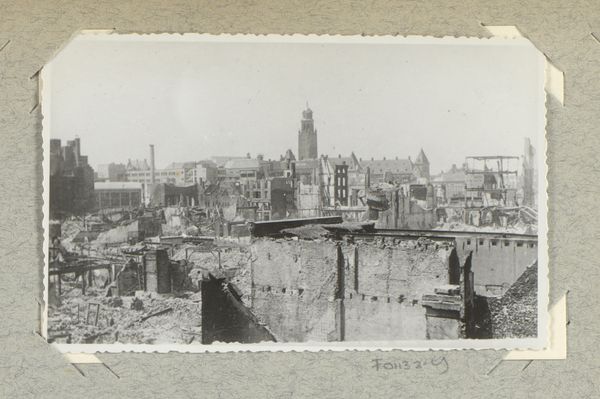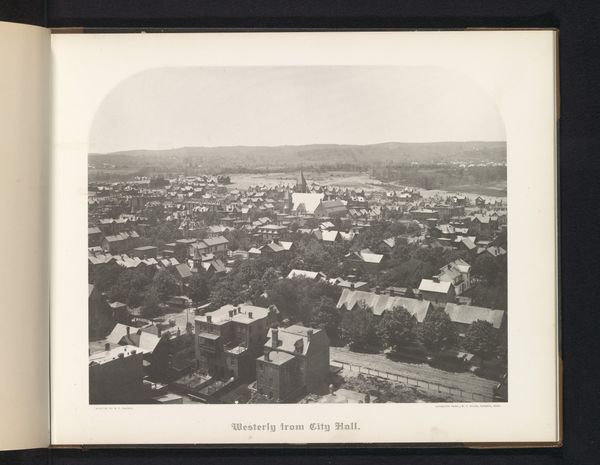
photography, gelatin-silver-print
#
dutch-golden-age
#
photography
#
gelatin-silver-print
#
cityscape
#
realism
Dimensions: height 83 mm, width 115 mm
Copyright: Rijks Museum: Open Domain
Editor: This is J. Nolte's gelatin silver print, "Gezicht op Rotterdam met ruïnes, gezien vanaf het Erasmushuis," taken sometime between 1940 and 1945. The monochrome adds to its somber mood. What symbolic meanings do you find within this stark landscape? Curator: The ruins speak volumes, don't they? We're looking at Rotterdam after the German bombing in 1940. Destruction is not merely physical; consider its profound impact on cultural memory. What symbols of resilience do you see amidst this devastation? Editor: I notice people going about their lives, a tram moving, green trees standing next to total destruction. That speaks to the will to carry on, wouldn't you say? Curator: Precisely. The artist’s lens captures not just loss, but also the unwavering human spirit. Photography becomes a potent medium here, documenting trauma, but also encoding cultural codes. How does this image relate to collective identity after trauma? Editor: By seeing the tangible results of tragedy in the city, there is a reinforcement of group identity, as a form of solidarity and commitment to rebuild what was lost, together. Does that connection work visually here too? Curator: Absolutely, consider the perspective; the Erasmushuis stands, overseeing the devastation, a possible anchor in chaos. Notice the recurring motif of the smoke stack amid the rubble—industrial power silenced, but not destroyed. Does that visual contrast convey a particular psychological impact? Editor: Definitely, it creates a powerful juxtaposition between devastation and lingering power. Thanks, this photograph is much more than a historical document; it’s a testament to enduring strength. Curator: Indeed, the photograph functions as both a historical record and a repository of collective remembrance. Seeing how visual language can influence how we relate to trauma is insightful.
Comments
No comments
Be the first to comment and join the conversation on the ultimate creative platform.
